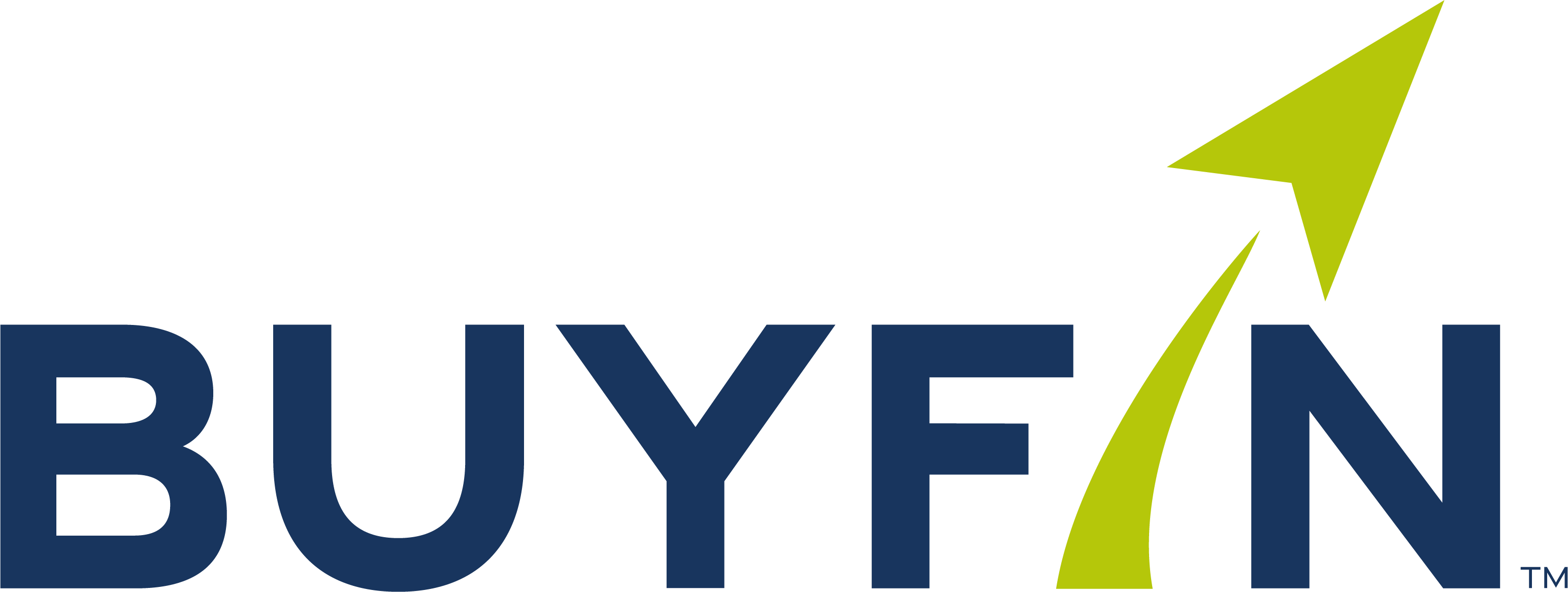
July 9, 2025
From Decision to Implementation: The Path to Financing Success
As a contracting business owner, you understand the strategic advantages of offering customer financing—higher close rates, increased average ticket sizes, improved cash flow, and stronger competitive positioning. You’ve made the decision to implement financing, but now face the critical question: how do you effectively integrate point of sale financing into your business operations?
The implementation process can make or break your financing program’s success. Recent industry data shows that contractors with structured implementation approaches achieve:
- 65% higher financing usage rates than those with informal rollouts
- 40% faster team adoption and proficiency
- 35% higher customer application rates
- 28% lower administrative costs for financing management
This comprehensive guide walks you through the step-by-step process of implementing a point of sale financing system in your contracting business, from initial preparation through full integration and optimization.
Phase 1: Strategic Preparation (Weeks 1-2)
Before introducing any new technology or process, thorough preparation establishes the foundation for success. This initial phase focuses on defining your financing strategy, selecting the right partner, and preparing your organization for implementation.
Step 1: Define Your Financing Objectives and Success Metrics
Establish clear goals and measurable objectives for your financing program:
- Specific revenue increase targets (e.g., 30% growth in average ticket size)
- Close rate improvement objectives (e.g., 40% increase in proposal conversions)
- Financing utilization goals (e.g., financing offered to 90% of qualified customers)
- Customer satisfaction targets (e.g., 4.8/5 rating for financing experience)
- ROI expectations (e.g., 300% return on financing program investment)
Field-readiness of the application system (mobile functionality, offline capabilities)
- Approval rates and financing limits for your typical project sizes
- Integration capabilities with your existing business systems
- Merchant fees and transparent cost structure
- Implementation support and training resources
- Industry-specific expertise in your contracting category
Step 2: Select the Right Financing Partner
Evaluate potential financing providers based on these critical factors:
Step 3: Develop Your Financing Program Structure
Design the specific financing options you’ll offer customers:
- Define standard term lengths for different project sizes
- Establish promotional periods and special offers
- Create tiered financing options for good/better/best service packages
- Develop seasonal financing promotions
- Set minimum transaction thresholds for financing eligibility
Step 4: Configure System Integration and Workflow
Establish the technical foundation for your financing program:
- Complete account setup and administrative configuration
- Integrate financing platform with existing business systems
- Design workflow processes for application processing
- Develop reporting systems for tracking financing performance
- Create documentation for standard operating procedures
Phase 2: Team Training and Enablement (Weeks 3-4)
With your foundation established, the next phase focuses on preparing your team to successfully offer and process financing. This critical phase often determines whether financing becomes fully adopted or underutilized.
Step 5: Conduct Role-Specific Training Sessions
Different team members have different needs when it comes to financing knowledge:
For Sales Representatives and Estimators:
- Comprehensive training on all financing options and terms
- Practice with payment calculators and financing tools
- Role-playing exercises for introducing financing naturally
- Objection handling techniques for common financing questions
- Strategies for presenting monthly payments versus total costs
For Administrative Team Members:
- Detailed training on application processing procedures
- Documentation requirements and verification processes
- Funding workflow and reconciliation procedures
- Troubleshooting common application issues
- Reporting and tracking processes
For Field Technicians and Installers:
- Basic understanding of available financing options
- Simple scripts for introducing financing availability
- Process for connecting customers with sales team for financing
- Recognizing financing opportunities during service calls
- Understanding how financing impacts job scheduling
Step 6: Develop Field-Ready Reference Materials
Create practical tools that support team members in the field:
- Quick-reference guides with financing program details
- Mobile-friendly payment calculators for different project types
- Digital presentation materials explaining financing benefits
- Objection handling cheat sheets with common responses
- Sample scripts for introducing financing naturally
Step 7: Implement Incentive Programs for Financing Usage
Develop motivation systems that encourage consistent financing offers:
- Spiff programs for approved financing applications
- Recognition programs for highest financing adoption rates
- Team competitions with meaningful rewards
- Performance tracking and public recognition
- Success story sharing in team communications
Step 8: Conduct Supervised Initial Applications
Support team members through their first financing experiences:
- Provide direct supervision for initial financing conversations
- Offer real-time coaching during first customer applications
- Debrief after each financing presentation to refine approach
- Celebrate early successes to build confidence and momentum
- Identify and address emerging challenges quickly
Phase 3: Controlled Rollout and Optimization (Weeks 5-8)
With your team prepared, the next phase involves a structured rollout process that allows you to test, learn, and refine your approach before full implementation.
Step 9: Implement a Phased Rollout Strategy
Rather than an immediate company-wide launch, use a staged approach:
- Begin with your highest-performing sales representatives
- Expand to additional team members as confidence builds
- Start with specific service categories before expanding
- Implement in one geographic region before wider rollout
- Use controlled testing of different approaches and scripts
Step 10: Gather and Implement Early Feedback
Actively collect and respond to initial implementation experiences:
- Conduct daily check-ins during the first two weeks
- Create anonymous feedback mechanisms for honest input
- Document common challenges and develop solutions
- Share early success stories and best practices
- Refine training and materials based on field experience
Step 11: Analyze Initial Performance Data
Review early results to identify optimization opportunities:
- Analyze financing offer rates across team members
- Compare approval percentages between different customer types
- Evaluate average ticket differences between financing and cash sales
- Identify patterns in customer questions and objections
- Measure application completion rates and abandonment points
Step 12: Refine Processes Based on Early Results
Use initial feedback and data to optimize your approach:
- Adjust training based on common challenges
- Refine scripts to address frequently occurring objections
- Modify workflow processes to eliminate friction points
- Update reference materials with successful approaches
- Enhance reporting to better track key performance indicators
Phase 4: Full Implementation and Ongoing Optimization (Week 9 and Beyond)
With a successful controlled rollout completed, the final phase focuses on full implementation, integration into company culture, and continuous improvement.
Step 13: Expand to Full Company-Wide Implementation
Scale your financing program across the entire organization:
- Implement your refined process across all team members
- Standardize financing as part of every sales presentation
- Integrate financing metrics into regular performance reviews
- Include financing in all new employee onboarding programs
- Celebrate company-wide implementation milestones
Step 14: Incorporate Financing Into Marketing Strategies
Leverage your financing capabilities in customer acquisition efforts:
- Feature monthly payments in all advertising materials
- Create financing-focused landing pages on your website
- Develop email campaigns highlighting payment flexibility
- Include financing messaging on vehicles and job site signs
- Implement financing-specific lead generation campaigns
Step 15: Implement Regular Performance Reviews
Establish ongoing monitoring and optimization processes:
- Conduct monthly financing performance reviews
- Compare team member performance metrics
- Analyze financing trends and seasonal patterns
- Identify ongoing training and coaching needs
- Benchmark against industry financing utilization standards
Step 16: Develop Advanced Optimization Strategies
Once your basic financing program is established, implement advanced approaches:
- Create specialized financing promotions for specific services
- Develop tiered financing programs for different customer segments
- Implement seasonal financing strategies to smooth business cycles
- Design upgrade financing offers for existing customers
- Create financing packages for maintenance agreements and recurring services
Common Implementation Challenges and Solutions
Even with careful planning, most contractors encounter challenges during financing implementation. Here are solutions to the most common obstacles:
Challenge #1: Inconsistent Financing Offers Across Team Members
Some team members naturally embrace financing while others rarely mention it, creating inconsistent customer experiences.
Solution: Implement a mandatory financing discussion policy where every proposal must include monthly payment options alongside the total price. Track financing offer rates by team member and provide additional coaching for those with low rates. Create standardized presentation materials that incorporate financing information automatically, making it harder to omit than to include.
Challenge #2: Administrative Bottlenecks in Application Processing
As financing volume increases, administrative teams may struggle with application processing, verification, and funding procedures.
Solution: Create clear workflow documentation with step-by-step procedures for each financing scenario. Designate a financing coordinator responsible for overseeing the process. Implement automation tools that reduce manual data entry and paperwork. Establish service level agreements for maximum application processing times to maintain momentum.
Challenge #3: Team Discomfort with Financial Discussions
Some team members may feel uncomfortable discussing financing options, particularly those with primarily technical backgrounds.
Solution: Develop simple scripts that allow team members to introduce financing without requiring financial expertise. Create analogies and comparison tools that make financing discussions more concrete and less abstract. Provide extensive role-playing practice in a supportive environment. Share success stories that demonstrate how financing helps customers rather than burdening them.
Challenge #4: Integration Issues with Existing Business Systems
Technical challenges can arise when connecting financing platforms with existing CRM, estimation, or accounting systems.
Solution: Conduct thorough testing in a controlled environment before full implementation. Create manual backup processes for when technical issues arise. Document common integration problems and solutions for quick reference. Designate a technical liaison responsible for managing the integration and serving as the primary contact with your financing partner’s support team.
Real Results: Contracting Businesses Transformed by Successful Implementation
The impact of well-implemented financing programs extends far beyond simple payment processing. Consider these real-world results from contractors who followed structured implementation approaches with BuyFin:
Absolute Comfort HVAC (Denver, CO)
- Increased average ticket size from $8,400 to $13,600
- Improved proposal close rate from 35% to 62%
- Reduced “think about it” responses by 70%
- Expanded premium system selection from 25% to 72% of sales
- Achieved full team adoption with 90%+ financing offer rate
Precision Plumbing Solutions (Dallas, TX)
- Transformed emergency repairs into complete system replacements
- Increased percentage of customers choosing premium fixtures from 20% to 65%
- Reduced cash flow constraints, enabling 40% business growth in 12 months
- Generated 45% more referral business from financing customers
- Improved team morale through higher commissions and reduced price objections
Elite Roofing & Exteriors (Atlanta, GA)
- Increased average project value from $12,500 to $18,900
- Improved close rate from 28% to 47% despite raising prices
- Expanded into complementary services with 55% attachment rate
- Extended selling season through off-season financing promotions
- Achieved 4.9/5 average customer satisfaction with financing process
These results demonstrate how structured, strategic financing implementation creates sustainable advantages for contracting businesses across diverse service categories.
Financing Implementation as a Business Transformation Process
Successfully implementing point of sale financing for contractors isn’t merely about offering a new payment method—it’s about transforming your entire approach to sales, marketing, and customer relationships. By following this structured implementation process, you can avoid common pitfalls while maximizing the business impact of your financing program.
The most successful contractors recognize that financing implementation is an ongoing journey rather than a one-time event. Through careful preparation, comprehensive training, controlled rollout, and continuous optimization, you can build a financing program that drives sustainable growth while helping customers access the quality solutions they truly need.
Ready to implement a powerful point of sale financing system in your contracting business? Contact BuyFin today for a personalized implementation consultation. Visit BuyFin.com to learn how our specialized implementation support can help you maximize the business impact of consumer financing for trade services.
Recent News

How BuyFin Helps Small Service Businesses Compete with Big Brands
November 5, 2025

The Future of Contractor Sales: Why Financing is Non-Negotiable in 2025
October 29, 2025

Swim Spa & Pool Financing: Helping Homeowners Dive into Comfort
October 22, 2025

Flexible Payment Options: The Secret Weapon for Contractor Growth
October 15, 2025

How Financing Transforms Field Service Businesses in 2025
October 8, 2025

Financing Options Homeowners Actually Want: A Contractor’s Guide
October 1, 2025


